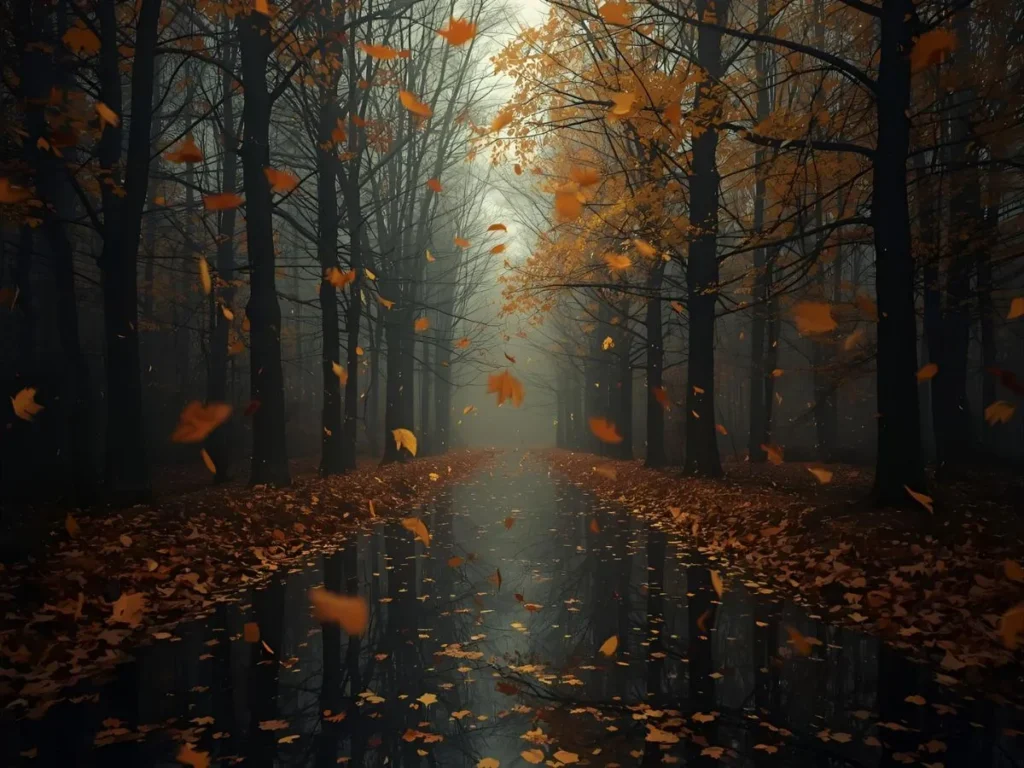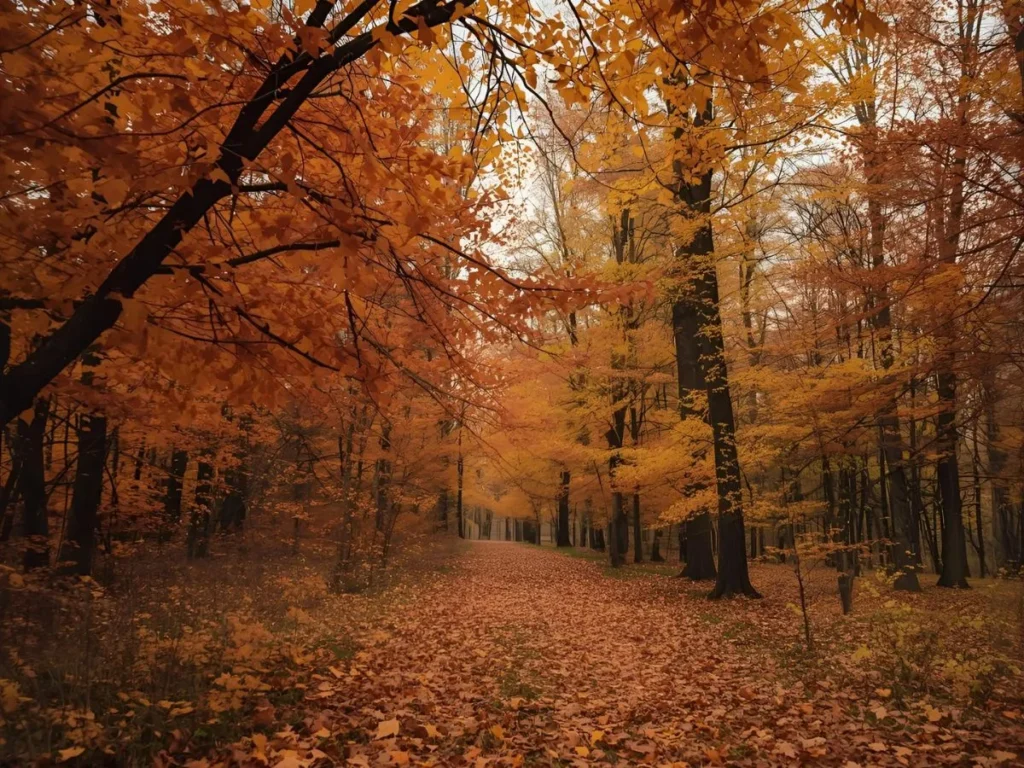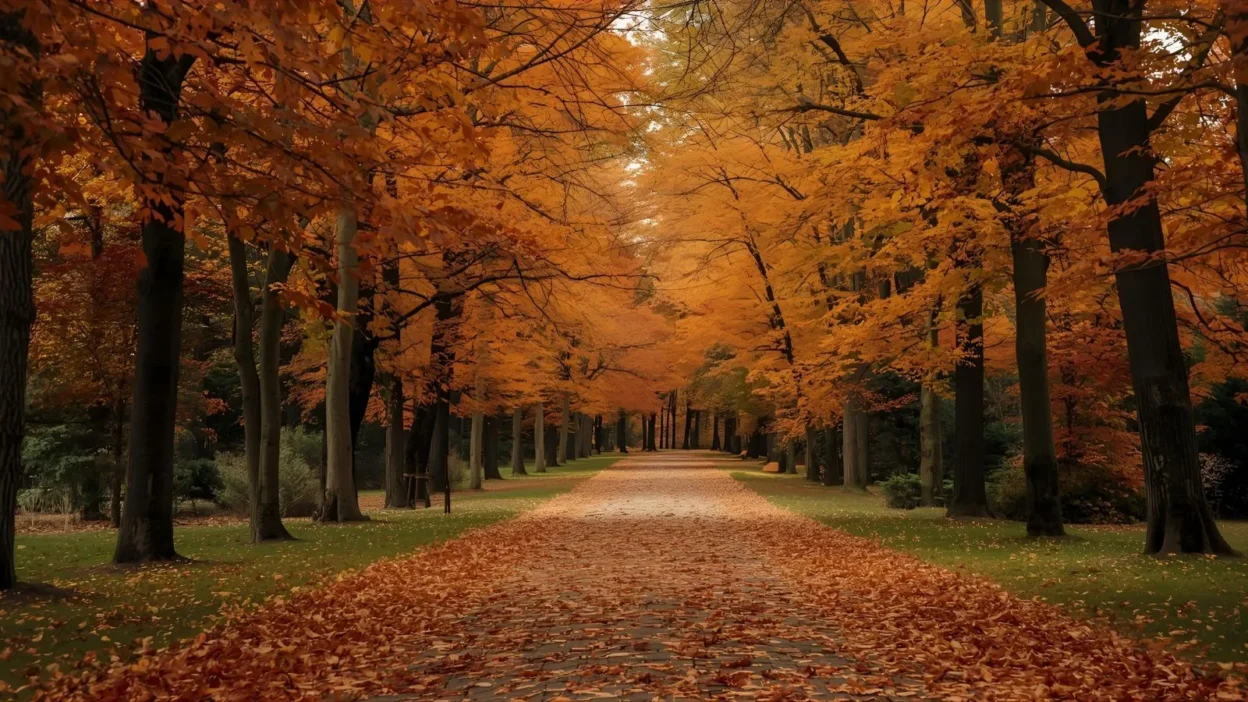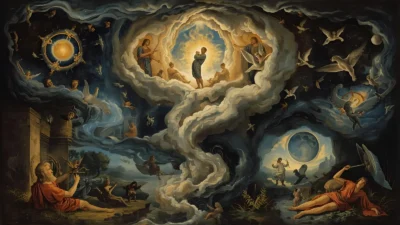As I walked through the woods last October, I stepped on a carpet of fallen leaves. Each crunch underfoot felt like the whisper of an old story—something ending, but something else beginning.
The sky was soft with golden light. Trees stood like quiet teachers, shedding what no longer served them.
That’s when it hit me: autumn isn’t just a season. It’s a message. It’s about release, beauty in transition, and the deep peace that comes from accepting life’s cycles.
In this post, we’ll explore autumn symbolism through literature, love, culture, and spiritual reflections.
You’ll discover how this magical season mirrors your own emotional journey—and how animal encounters during this time might carry even deeper meaning.
Autumn Symbolism in Literature

Writers throughout history have turned to autumn to express complex emotional truths. Autumn symbolism in literature often represents transition, maturity, nostalgia, and the melancholy of impermanence.
Where spring is birth and summer is bloom, autumn marks a graceful decline—but not in a negative way. It’s a beautiful pause before the deep rest of winter.
In poetry, such as Keats’ “To Autumn,” the season is a symbol of ripeness and fulfillment, a reminder that even endings can be rich.
In novels, autumn often signals a shift—a turning point in a character’s life or an emotional reckoning.
When animals appear in literature during autumn scenes—a fox crossing a path, birds migrating, or a bear preparing for hibernation—they symbolize instinct, preparation, and the soul’s deep knowing that change is necessary and natural.
Autumn Symbolism in Love
When we think about love, we often idealize the spring—the blossoming, the first spark. But autumn symbolism in love is far more profound.
It reflects mature, grounded love. The kind that has seen storms and still chooses to stay.
Falling leaves can represent the layers we shed in relationship. In love, autumn asks:
- What can we let go of together?
- What no longer serves our connection?
- How do we hold each other through the changes?
Couples who’ve been together for decades often describe their love as an autumn kind of love—deep, calm, resilient. It’s not flashy, but it’s real.
Just as trees release their leaves to survive winter, sometimes we must release past hurts, old patterns, or unrealistic expectations in love.
Animal encounters—such as seeing a pair of migrating birds or squirrels gathering food—can be seen as signs of partnership, preparation, and emotional intelligence in love during the autumn season.
To Autumn Symbolism

John Keats’ iconic poem “To Autumn” is perhaps the most famous tribute to the season. Here, autumn symbolism is lush and layered.
The poem moves through the cycle of harvest to decline with grace and wonder. Autumn is not just about endings—it’s about completeness, gratitude, and acceptance.
Keats uses nature as metaphor:
- Ripened fruit symbolizes abundance and reward after effort.
- Soft dying day reminds us of the beauty of closure.
- Winnowing wind is the breath of release.
In a spiritual sense, “To Autumn” invites you to notice what has come full circle in your own life.
What have you worked for that’s now bearing fruit? What can you now appreciate before it’s time to let go?
Seeing deer, foxes, or owls in autumn can reflect intuition, readiness, and the spiritual harvest of your efforts.
Autumn Symbolism in The Great Gatsby
In F. Scott Fitzgerald’s The Great Gatsby, autumn symbolism emerges quietly but meaningfully.
As the story draws to its tragic conclusion, autumn steps in—not just seasonally, but emotionally.
Gatsby’s dream fades as the leaves fall. The season underlines:
- Decay of illusions
- Fading dreams
- Chill of consequences
This is important spiritually: autumn isn’t cruel, but it is honest. It reveals the truth of things. For readers, the symbolism of autumn here reflects a call to wake up and see things as they are.
If you encounter animals such as crows or solitary birds during this time, they may mirror awareness, solitude, and the sobriety of truth.
Autumn Symbolism in Japan

In Japanese culture, autumn symbolism is deeply tied to wabi-sabi—the beauty of impermanence.
Autumn is honored for its vibrant yet fleeting colors, symbolizing how all things pass, and that transience itself is precious.
Japanese poetry, especially haiku, often features:
- Maple leaves (momiji): Symbolizing graceful aging and noble sorrow.
- Crisp wind: A metaphor for mental clarity and change.
- Cicadas’ silence: Emphasizing the end of an era.
Spiritually, autumn in Japan is a time of reflection, gratitude, and humility. Animal symbols like the crane (longevity), dragonfly (courage), and fox (wisdom) are prominent, showing how nature and spirit align during this season.
Real-Life Scenarios:
Scenario 1: The Squirrel on Your Balcony
You notice a squirrel busily collecting food each morning. Spiritually, this is a message of preparation and prioritization. Autumn reminds you to focus on what matters. What emotional reserves do you need to store for the winter of your life?
Scenario 2: A Sudden Downpour While Walking Among Leaves
You’re caught in unexpected rain while walking. The drenched leaves stick to your boots. This is a cleansing sign. Spiritually, it symbolizes letting the past wash away. The season is asking you to allow yourself a fresh path—even if it feels messy at first.
Scenario 3: A Deer Crossing Quietly at Dusk
As the sky turns pink, a lone deer crosses your trail. This is a moment of gentle presence. Deer are symbols of grace and awareness, reminding you that during change, quiet strength and mindfulness are your greatest tools.
FAQs
1. What does autumn symbolize spiritually?
Spiritually, autumn symbolizes change, letting go, reflection, and inner harvest. It’s a time to release what no longer serves you and prepare for spiritual rest and rebirth.
2. Why is autumn associated with maturity?
Autumn comes after the peak of summer. Just as in life, it’s the stage of wisdom, reflection, and appreciating what you’ve built. It marks emotional depth and seasoned understanding.
3. What does it mean if you frequently see animals in autumn?
Seeing animals—especially squirrels, deer, or birds migrating—can signal that your intuition is sharpening. These are messages to prepare, slow down, or reflect on your path.
4. How is autumn different from winter spiritually?
Autumn is the transition—a season of release and acceptance. Winter is stillness and rest. Autumn prepares you for what’s next, helping you surrender with beauty and grace.
5. Can autumn symbolize new beginnings?
Yes! While it seems like an ending, autumn clears space. By letting go, you open yourself to new insights, spiritual growth, and emotional clarity. It’s the beginning of deeper truths.
Conclusion:
If you’ve been feeling like things are shifting in your life—or if animal encounters have been stirring something within you—know that autumn holds you gently in its arms.
It’s not here to rush you. It’s here to remind you.
That letting go doesn’t mean failure.
That shedding can be sacred.
That beauty exists in every stage—even in the falling.
Autumn symbolism teaches us how to love the letting go, to find color in the change, and to trust that every leaf that falls is making room for something new.
So next time a squirrel darts past you or a breeze tugs at your coat—pause. Listen. Let autumn speak to your soul. 🌬🍂




